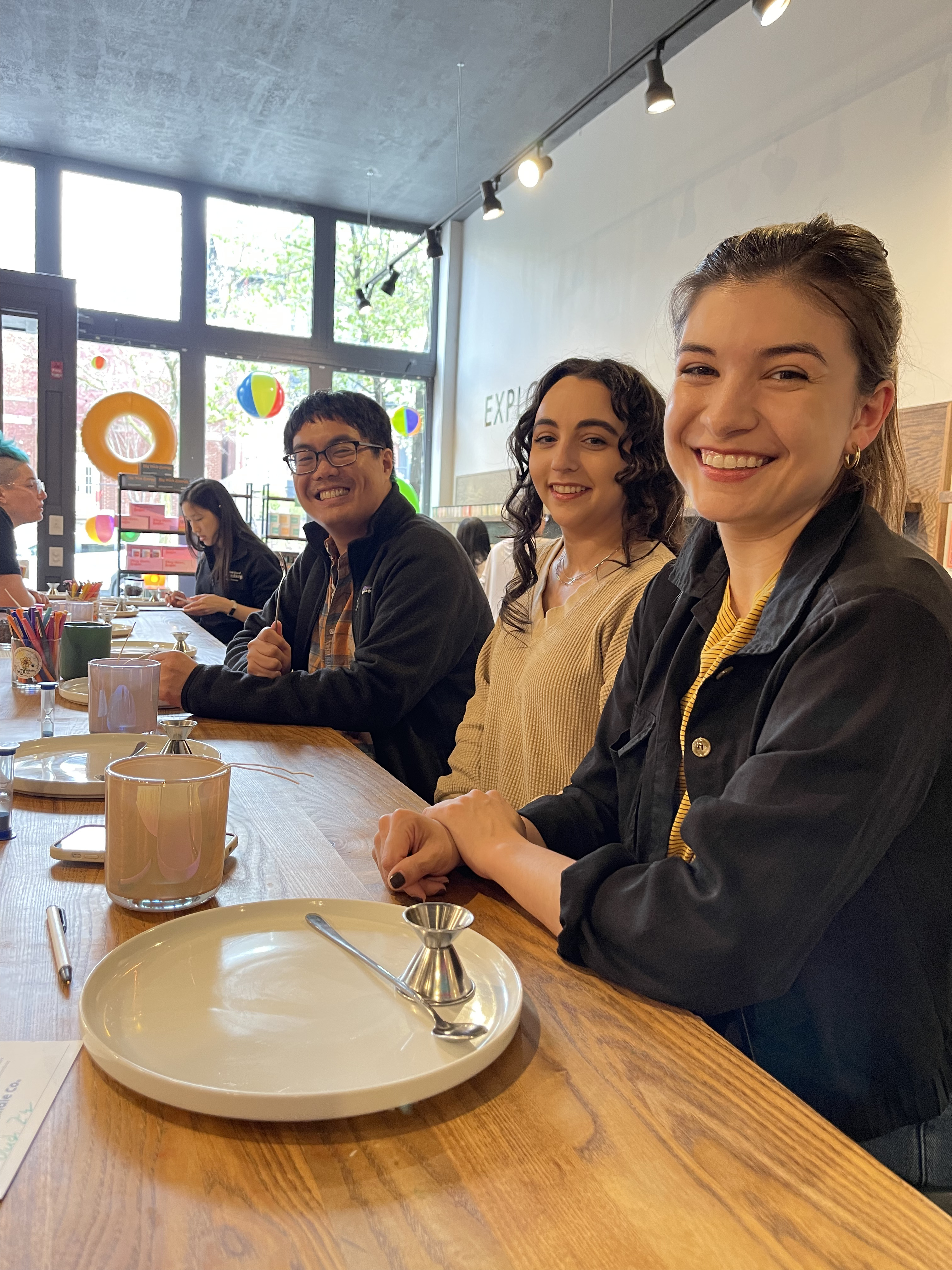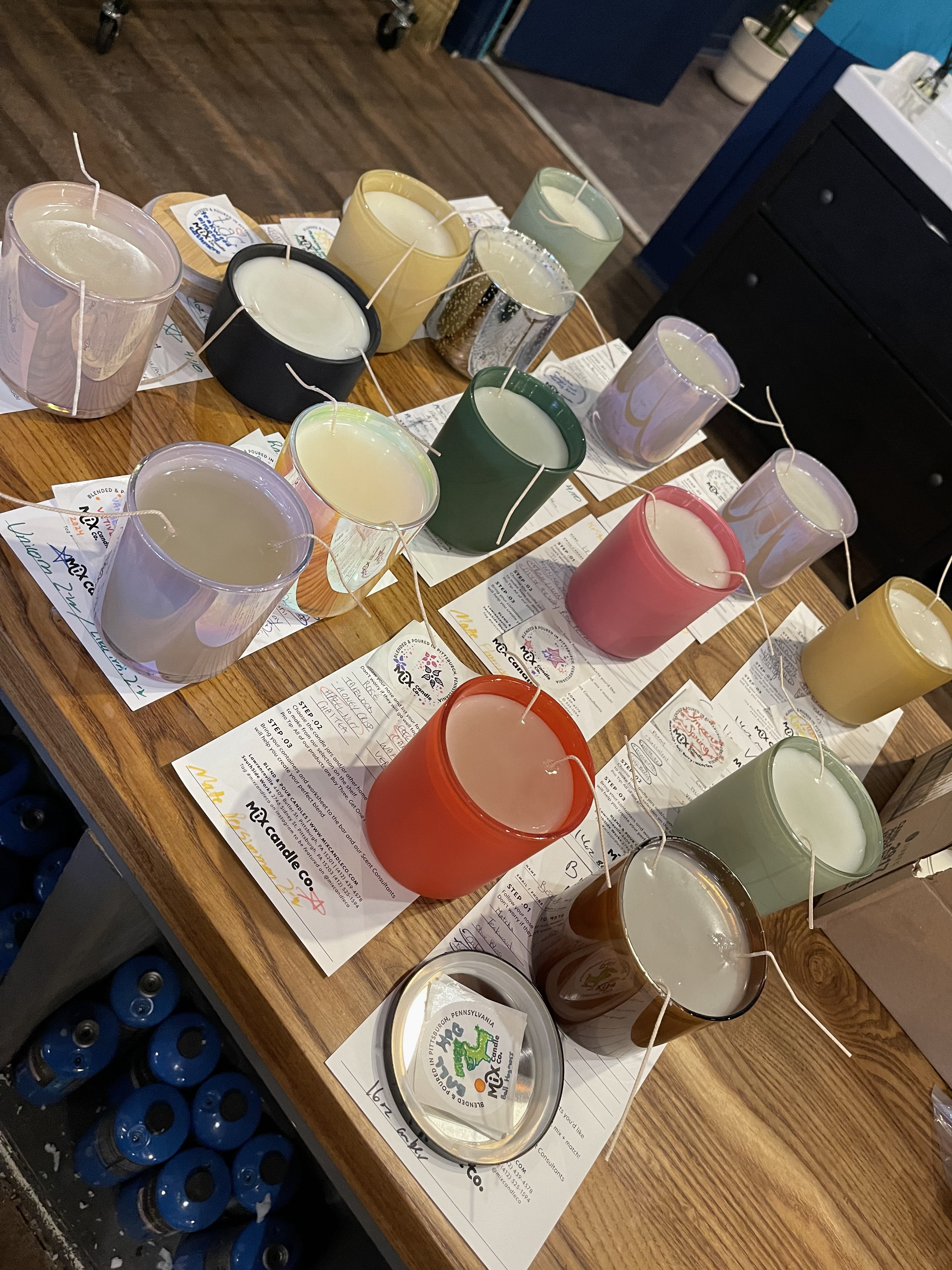- Home
- POMA
- POMA Foundation
- DO Voices
- Residents & Students
- Resident Information
- Student Information
- Mentorship Opportunities
- Scholarship Opportunities
- Clinical Writing Contest
- Scientific Poster Day
- Winter Residency Fair
- Education
- Advocacy
- Affiliates
- Public
UPMC Shadyside Family Medicine – Candle Making 04/10/2024Shadyside Family Medicine residents spent part of a late afternoon at Mix Candle Co expressing their creativity while exploring a wide array of scents to find a perfect trio to mix and create their own candles. It was an easy way to relax, relieve stress and bond with our residency peers. Each resident had a unique "vibe" they were trying to create with their candle, and it was so fun getting to smell each other's work of wax. ....
1. What was the general understanding of the purpose of the project by participants? Our candle making activity was done on one of our wellness days post didactics. Our wellness curriculum and this activity was designed to remind residents in training the importance of spending intentional time on their own emotional and mental wellbeing and about the importance of social connection. The purpose of this activity was to show the benefits of stress relief through creative expression as each attendee was able to smell over a 100 different scents, pick a few of their favorites and blend/mix them in unique proportions to create a candle that fit their personality. It was a great way to bond with residency peers as we all went around and sniffed each other’s candles and appreciated the uniqueness of each. 2. Why did you choose this specific wellness activity We choose this wellness activity because it was something that we first did with the POMA wellness grant in 2023. The activity was a huge hit with our residents and something that was very enjoyable, easy to get to, allowed residents to come late if they needed to based on rotation schedules and cost friendly. We are hoping to make candle making a yearly tradition at Shadyside as part of our wellness curriculum, because of how happy residents have been with it.
Workplace, social, and emotional wellbeing were demonstrated through this activity. Often times in residency due to varying schedules, residents can go long times without seeing some of their peers but creating intentional times to get together outside of work contributes to the joy that comes from the workplace. Who we work with a huge part of our wellness and creating time for social wellbeing and emotional connectedness helps significantly. Doing an activity that was creative and stimulated the senses in a calm, peaceful environment also added to a sense of relaxation and being present in the moment. Sometimes life is so fast paced in residency we forgot to be present.
5. What can POMA do to address wellness and life balance for your future? Having virtual panels with speakers who discuss their career paths and the key insights they learned in order to maintain a happy, balanced life while practicing medicine. Learning from others what works and what does not can be very helpful for young trainees. Advocacy is a big component for creating positive changes. Involvement in advocacy by POMA to help on a national level to help increase residency spots to reduce burden on trainees by increasing the number of residents per training program would help promote wellness. Additionally, a large number of Osteopathic doctors are in primary care and it is one of the specialities with the highest burnout rates and part of this is due to large clinic patient volumes. POMA’s assistance in improving reimbursement and compensation for providers, whether on a state or national level would also help with provider wellness.
|








